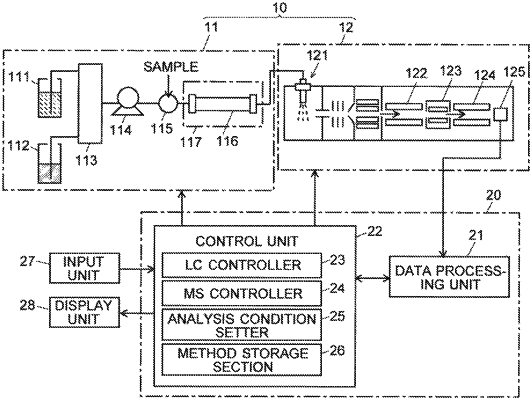| CPC G01N 30/34 (2013.01) [B01D 15/325 (2013.01); G01N 30/7233 (2013.01); G01N 30/88 (2013.01); G01N 2030/027 (2013.01); G01N 2030/6013 (2013.01); G01N 2030/884 (2013.01)] | 5 Claims |

|
1. A method for analyzing a plurality of kinds of azo compounds in a sample, comprising:
a first analyzing step in which a first analysis is performed for a target sample to detect a plurality of azo compounds in the sample, using a liquid chromatograph in which a liquid chromatograph with a reverse phase column, the liquid chromatograph being coupled with a mass spectrometer; and
a second analyzing step in which a second analysis is performed for the target sample to detect a plurality of azo compounds which are contained in the sample, using a liquid chromatograph in which a liquid chromatograph with a reverse phase column, the liquid chromatograph being coupled with a mass spectrometer,
wherein:
the first analyzing step is a gradient analysis using, as two mobile phases, a first mobile phase which is either an aqueous ammonium acetate solution or an aqueous ammonium formate solution, and a second mobile phase which is a mixture of an organic solvent and either an aqueous ammonium acetate solution or an aqueous ammonium formate solution; the second analysis is a gradient analysis using, as two mobile phases, a first mobile phase which is an aqueous solution of ammonia or ammonium salt with pH greater than 7.0, and a second mobile phase which is an organic solvent; and the azo compounds to be detected in the second analysis are azo compounds each of which produces a primary aromatic amine hazardous to a human body through a reduction reaction, the azo compounds including include azo compounds contained in seven kinds of azo dyes which respectively have following color index substance names: Acid Red 26, Acid Red 114, Direct Red 28, Direct Blue 6, Direct Black 38, Direct Brown 95 and Navy Blue 1.
|